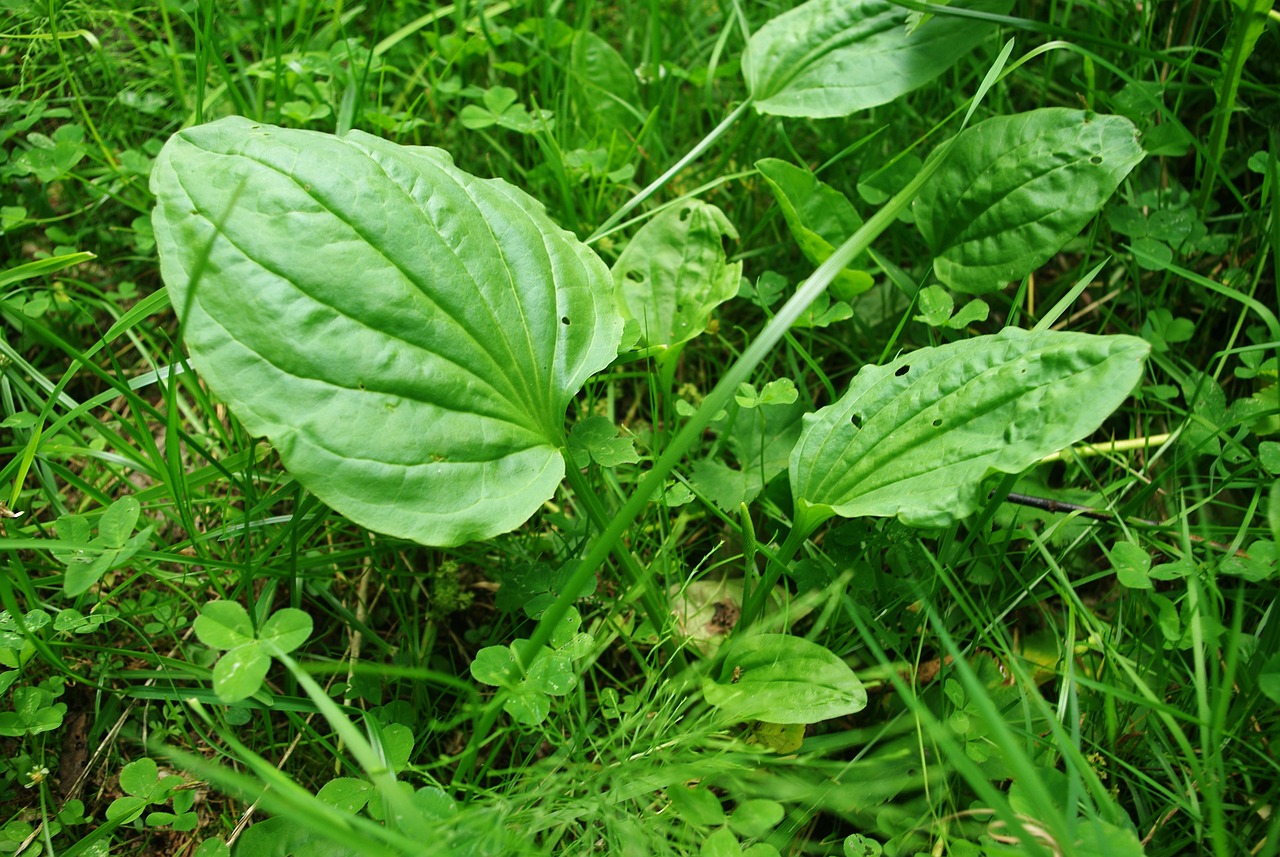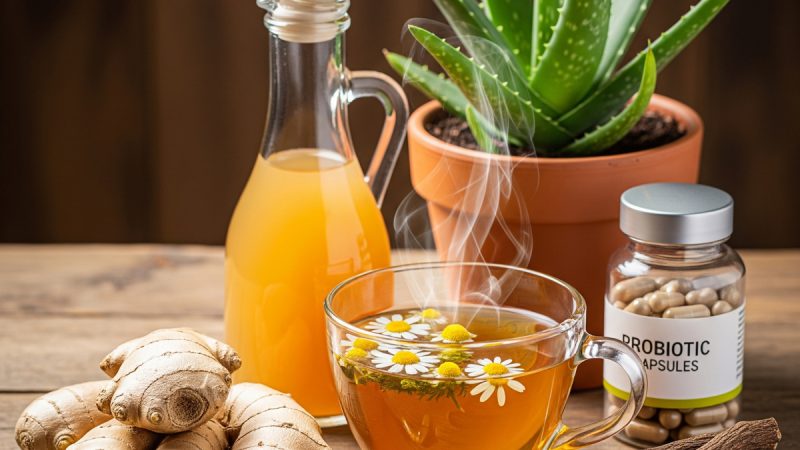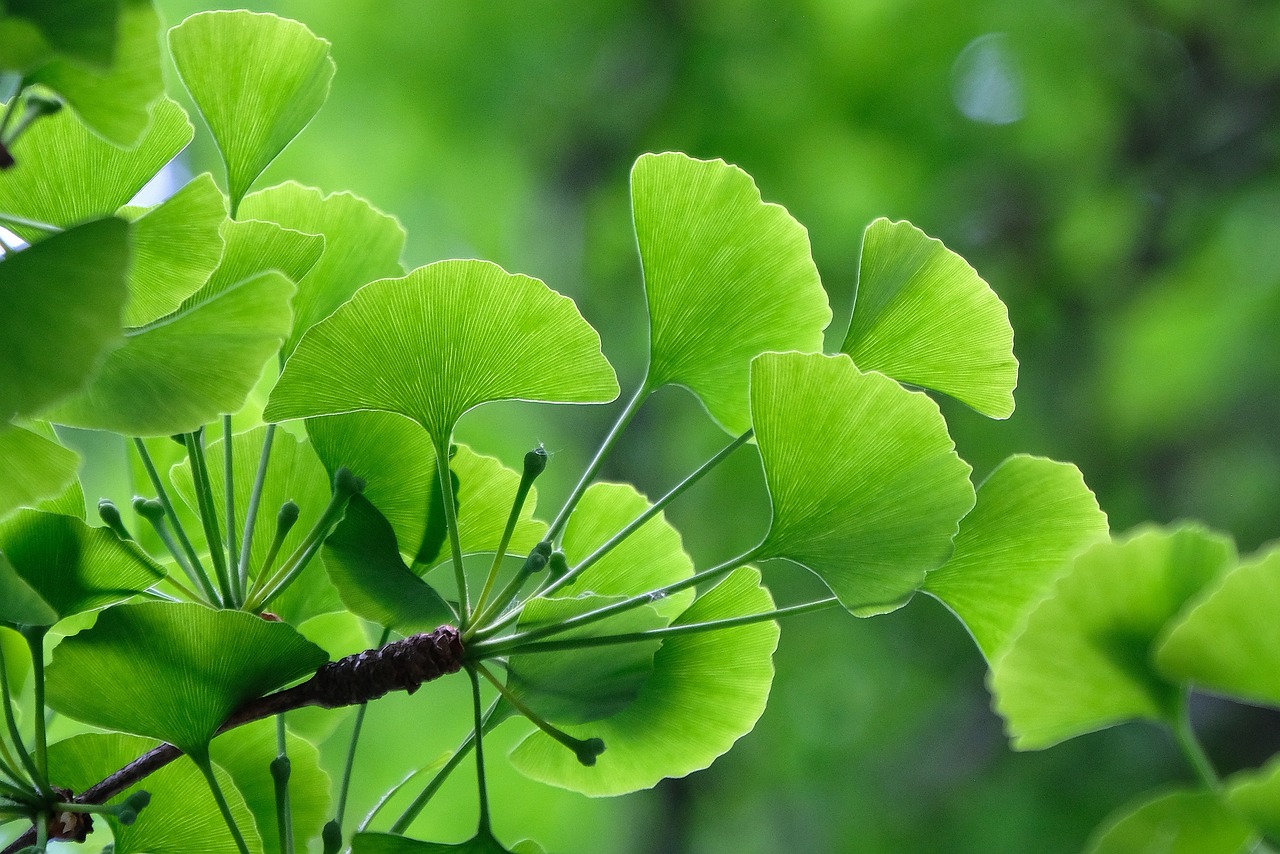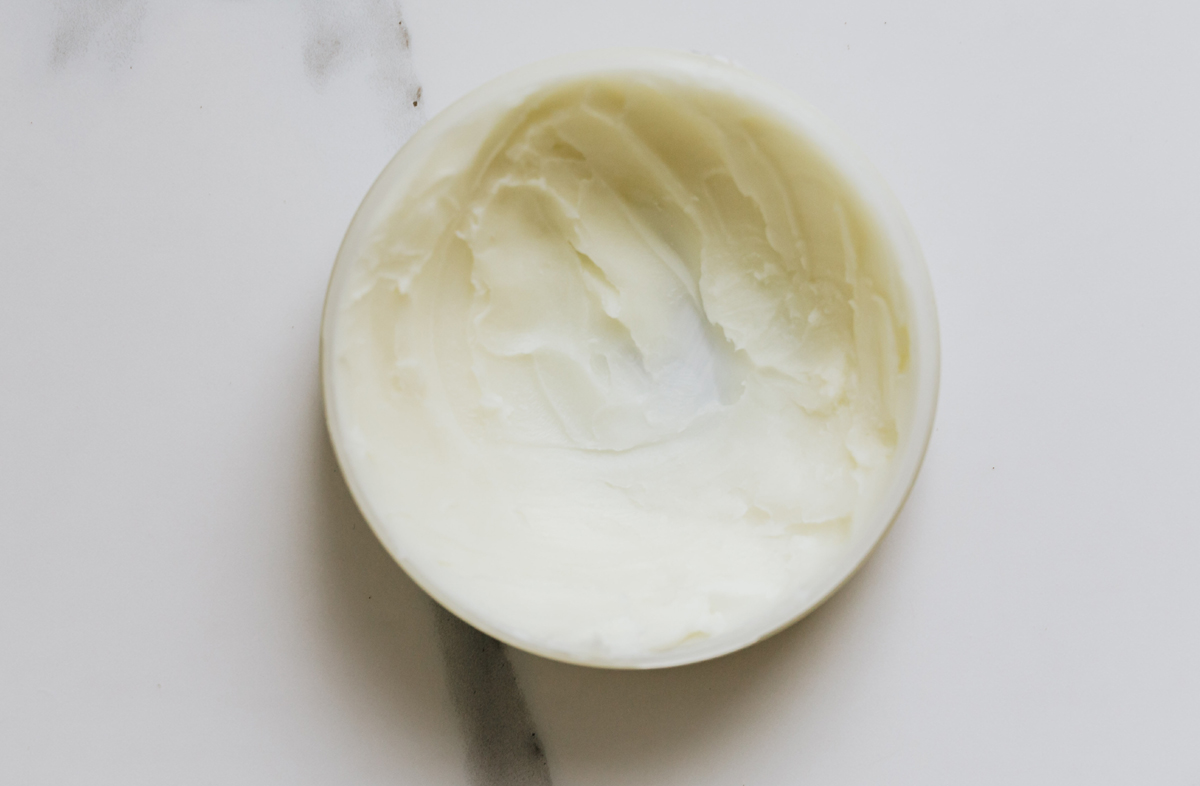Plantain Herbs: A Medicinal Panacea

If you took a walk outside and looked down at the cracks in the driveway or sidewalks, you will find plantain herbs. Plantain can also be found naturally in lawns and gardens as well as out in the wild.
Some have dubbed plantain as a “common and noxious weed” while others proclaim it as a “miracle herb”. You would recognize the plantain by its broad leaves (sometimes referred to as “Broadleaf Plantain”) growing from its plants bottom. The leaves are ovate or egg-shaped and are found to be ribbed and jagged. The flowered stems grow up to a height of 4-10 inches with long, slender barbs of dense purple-greenish flowers. The flower contains up to 30 seeds and multiplies and disfigures lawns rapidly. It is a rough and tough perennial plant very much like the dandelion.
Please take note that plantain – the starchy, banana-like fruit, is completely different and not related to the plantain “herb/weed” discussed here!
Plantain Uses:
Plantain herbs have a long history of use dating way back to the 14th century. It has been coined a medicinal panacea, for plantain herbs have been known to be a “cure all” for typically every ailment. The American Indian gave plantain the name “Life Medicine” for its variety of uses. In the United States, the plant is nicknamed “Snake Grass Weed” due to its efficiency in cases of rattlesnake bites where the plantain roots juice is mixed with salt and applied locally to the wound. When any form of the leaf is applied to a bleeding surface, plantain is safe and effective for it quickly stops the blood flow and will repair tissue damage. Plantain has an astringent property that has been used for inflammation of the skin, malignant ulcers, boils, burns, insect bits, sunburns and has been used as a general pain reliever. Plantain is known to be an effective medication for an enlarged prostate, colic and is a remedy for respiratory disorders like colds, sore throats and tonsillitis. It has been known to treat bruises and broken bones.
Among the many other plantain uses, this herb is very popular as a body purifier and cleanses the body of all toxic elements. Plantain will open obstructions in the liver and spleen. It has been used as an alternative medicine for asthma, emphysema, bladder infections, bronchitis, fever, hay fever, hypertension, rheumatism and diabetes. It has been said to be effective with epilepsy, dropsy and jaundice. Additionally, plantain treats ear infections. When the juice is dropped into the ears (3-6 drops twice a day), it will ease the pain and will restore hearing loss. And get this smokers; plantain causes a natural aversion to nicotine in tobacco. It is now being used in “stop smoking products”.
Plantain roots, seeds and leaves can all be used internally and externally. They can be used as teas, washes, poultices, infused oil, lotion, cream, salves, decoctions, juice, tincture, ointment, gargle and syrup. Plantain has never been associated with any common side effects and is thought to be safe for infants and children as well. There is no information available regarding its use by pregnant or nursing mothers, although topical applications appear to be safe. The American Herbal Retailers Association has classified plantain as “able to be safely consumed when used appropriately”. However, there have been rare reported incidences by allergy sufferers having flare-ups when exposed to the plantain pollen. As with any medication, use in appropriate, moderated applications and always pay attention to your bodies needs.
Plantain Nutrition:
If the above were not enough, plantain is also an edible herb. Plantain is very high in beta-carotene, vitamin A and C (ascorbic acid), vitamin K, calcium, potassium and fiber. You will want to harvest the young, tender leaves in the spring and toss them into your salads, or steam and use plantain as a spinach alternative. The leaves have a tendency to get tough quickly, so be sure to harvest only the youngest leaves. The flowers bloom all summer long and the stalks can be eaten raw or cooked. When you harvest the seeds, you will find a nutty flavor. They can be heated and dried then added to a variety of foods or ground into flour. (The seeds tend to have a mild laxative effect, almost like psyllium, which is used in commercialized “Metamucil” so you will probably want to use it sparingly.) The fresh leaves, seeds and roots can all be brewed to make herbal tea. You can dry every part of the plantain herb for later medicinal or culinary purposes. Note: Never harvest any plants along roadways due to exhaust residue or sprayed pesticides. Remember to always harvest or purchase your herbs from a reliable source.
Recipe- Plantain Infusion
For internal and external use: The process of seeping the leaves, roots and/or flowers in already boiled water for a long period of time.
To Make Tea:
This recipe all has to do with your own personal tastes. Some people like tea strong…others like it weak, according to their own personal palate. (Of course there is always honey, lemon or another sweetener available) To start experimenting with brewing your own plantain infusion, start out with 1 tablespoon of freshly; mashed/ground leaves (you can mash the herbs in a food processor) (1/2 tsp. dried) per 1-cup boiled water. You can also use a mixture of flowers and roots along with this. Remember to place it all in a tea ball or cheesecloth so you will not have the residue floating in your cup. If you have found your seeped tea to be too weak, drink it like water anyway to soothe the throat, lungs, bowels and any other internal organs along the passage way. If you are a smoker, add a bit of honey or other sweetener and drink it to stifle the nicotine cravings throughout the day. Regardless, drink this tea accordenly. Remember, this herb is a medicinal panacea!
If you have found your brewed tea to be too strong…do not throw it out. Use it as a wash by applying the tea to a cotton ball or absorbent cloth then squeeze a few drops into the ears for wax buildup and for better hearing. Better yet, place the tea absorbed cotton ball on the eyes to soothe them after a long, stressful day. This method will cure pink eye or any other eye ailment within days. If you have an open wound, rash, insect bite, sunburn or any other scar tissue present, apply the cotton ball to the effected area externally and continuously until there are no other traces of the ailment found. There have been reports of plantain fading stretch marks and scars.
Infused Oil:
To start experimenting: fill a pint sized container with freshly crushed plantain leaves (if you are using dried leaves-only fill the jar half full) then pour any type of vegetable oil over the top to fill the jar-leaving enough room to shake the contents. Let the jar sit in the sun and heat for at least 2 weeks. After the allotted time you will find the concoction to be a beautiful dark green color. (It gets better and more potent with age, but to an extent) Strain the mixture and then apply the oil to soften facial tissue. Use it nightly to ease wrinkles, age spots etc. You can use plantain oil on babies/young children’s skin instead of commercialized lotions or creams, (Plantain is 10% of the ingredients found in commercialized Vaseline Jelly or Vaseline Intensive care products.) to cure diaper rash, cradle cap, and diaper yeast infections.
Poultice:
A pasty substance. Applied externally. After you have infused the plantain herbs and have strained the residue, you can then use the strained residue as a poultice, a paste like substance, to be applied as a more localized version of the infused form. Infusions get to the blood stream internally. A poultice is external and takes time to be absorbed through the skin tissue locally. Both have their benefits according to the treatment necessary. Apply a poultice to insect sting bites, sun and windburns or broken bones.
This is probably the best time to mention the purist form of plantain herbs: the act of chewing. In an emergency, when a person has been stung by a bee, wasp or rattlesnake, or perhaps is allergic to any of the above, you will need to insert the leaves (in more extreme cases, the flower and root as well) into your mouth and chew the substance, letting your saliva intervene with the mixture, then keep chewing to obtain a juice. You will then want to literally spit the substance upon the wound or infected area immediately. Keep applying the measure until the affected area is covered completely. Let rest, then apply additional plantain as needed when the “spit mixture” has been absorbed of moisture.
This is the most potent measure of Plantain available. Most people object to this measure because of its raw acrid taste…but it is the most potent and effective measure to administer to any infected ailment, especially in an emergency. If you have an infected, broken tooth or suffer from gingivitis, chewing a mixture of plantain parts in your mouth will cure the ailment.
Decoction: Internal or External Use
The process of boiling the plant material in water for 8-10 minutes. Then strain through cheesecloth. For thrush, take 1 oz of the seeds and boil them in 1 ½ pint of water. Let the mixture boil down to 1 pint then let sit for about 20 minutes. Strain and cool. The syrup can then be mixed with sugar or honey and given to a child in tablespoon doses, 3-4 times per day. The syrup will also provide relief from coughs, congestion or sore and inflamed throats. Used as a juice, take 3 cups of fresh plantain leaves to one cup pure liquid honey. Crush the leaves in a food processor, drain then squeeze the juice using cheesecloth. Combine 1 cup of the juice with honey and simmer on the stove for about 10 minutes on low heat, stirring regularly. Let it cool then transfer to any container. Drink 1 spoonful of this nectar 3 times daily to fight fatigue, anemia or flu like symptoms.
By now you can see that plantain herbs are very useful for numerous applications. The plant’s leaves can be taken as a juice, tincture and syrup. An infusion prepared with the plantain’s seeds is also very useful in treating various disorders. Externally, the herb’s leaves may be applied as a poultice, ointment or cream, wash and gargle. And the list continues. All it takes is a walk outside your very own front door to find this panacea herb!
Successful Gardening!
Kali S Winters
The Author:
Kali S Winters is gardening enthusiast and author who spends much of her time teaching others how to setup and maintain beautiful, amazing gardens.








